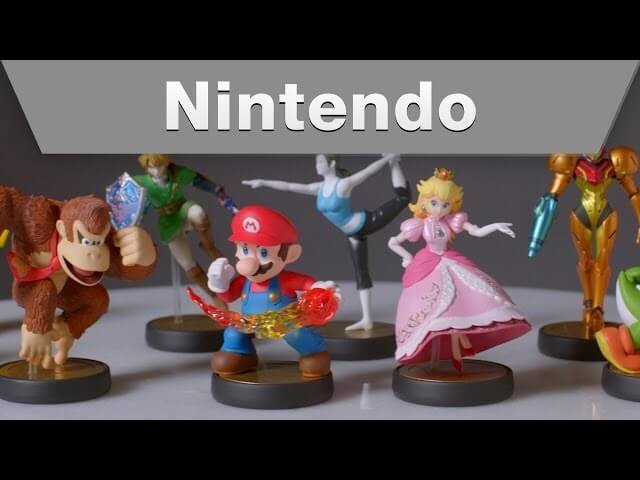It’s surprisingly easy to forge a bond with Nintendo’s Amiibo figures

It’s that time again, Gameologeteers, the time to talk about our weekend gaming plans—and any other topics at hand. As always, we invite you to tell us what you’ll be playing this weekend down in the comments. As for me, I’m not sure, but I bet there’s a good chance that I spend some more time with Super Smash Bros. For Wii U and my Amiibos.
Amiibos are these little Nintendo character figurines that, much like Skylanders or Disney Infinity, communicate with the Wii U Gamepad and interact with certain Nintendo games. I have to admit, when they were first announced, I didn’t see them as much more than a cash grab, a chance for Nintendo (who at that point seemed desperate for something new that might bolster the Wii U business) to capitalize on a waning fad. And while the Amiibo interaction with games like Mario Kart 8 and Hyrule Warriors certainly feels that way—to be fair, they weren’t designed with Amiibos in mind—Smash Bros. has made me a believer.
When you send an Amiibo into Super Smash Bros. For Wii U, that character comes to life as a computer-controlled fighter. You get to pick a color and a name and customize its moves, if you’d like. At that point, it’s just another character for you to fight. It’s a blank slate, though, a hapless, lackadaisical combatant. Less than a minute into a match, it’ll start leveling up, its strength and defense increasing every time. That sounds about par for the course, right? You play with the thing, and it grows stronger.
Now here’s the interesting part: The Amiibos also learn from you. I’m always skeptical about these sorts of artificial intelligence learning features in games (does anybody remember Drivatars?), but I’ve found my Amiibos compelling. With time, they mimic your tactics—down to minute details. A friend of mine, for example, was training his Kriby Amiibo while playing as Captain Falcon. Whenever he plays Falcon, he’s obsessed with landing this devastating airborne knee-bash maneuver, and his matches with the Kirby Amiibo were no different. The Amiibo picked up on this and started trying to throw the knee as well, but Kirby doesn’t have a killer knee attack. So now he just has this Kirby that jumps around throwing out an ineffective move, all because it thinks it’s a Captain Falcon.
That’s not a great for the Amiibo’s prospects as a prized smasher, but it’s a perfect example of why I’ve found the Amiibos so endearing. By now, I’m sure my friend has reset Kirby’s data and headed back into the dojo, training his Amiibo from the ground up. So long as he wants his Amiibo to achieve, he has a responsibility to teach it. As they learn and grow, they really do feel like pupils, dependent on us to make them better fighters. As the skill gap between master and Amiibo narrows, however, they become worthy sparring partners. After a couple of training sessions, fighting against my Yoshi Amiibo is like fighting against myself. We end up in these odd exchanges where we dodge back and forth, just waiting for one of us to crack or land our favorite move (the up-air tail swipe). That’s right: our favorite move.
That makes the way Nintendo has handled Amiibo distribution especially painful to watch. The company is committed to making an Amiibo for every member of the Smash Bros. roster, and that’s great. The problem is, retailers don’t know or care about how much Smash Bros. players love Marth from Fire Emblem. They know kids love Mario and Link and Pikachu, so they’re going to fill their limited shelf space with the ones they think will sell. As a result, Marth and the more obscure Nintendo characters became impossible to find as soon as the things went on sale, and Nintendo has been horrible at communicating about whether or not we’ll see any more of these head to stores. As of now, it sounds like they might trickle out into the market, but I doubt they’ll get much easier to find. I wish Nintendo would just sell them online on its own, in addition to traditional retail stores, manufacturing the figures as orders come in. At least that way, people might get to experience the surprising camaraderie that arises from these little hunks of plastic.